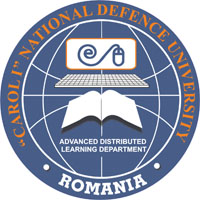BLENDED LEARNING IMPLEMENTATION - A ROMANIAN HEI CASE
BLENDED LEARNING IMPLEMENTATION - A ROMANIAN HEI CASE
Author(s): Iuliana DOROBĂŢ, Andrei TomaSubject(s): Education
Published by: Carol I National Defence University Publishing House
Keywords: Blended learning; e-learning platforms; Moodle; Romanian HEIs
Summary/Abstract: Digital technologies are an enabler for the enhancement of the quality of learning and teaching. By incorporating ICT (Information and Communication Technologies) in the learning process (and therefore achieving blended learning), HEIs (Higher Education Institutions) have the potential to complete the shift from the "old way" of teaching and learning (based on the mere transmission of information) to the development of a partnership between the student and teacher that can have a significant impact on the learning and teaching experience overall. Therefore, in order to augment academic performance and to withstand the challenges of an increasingly competitive environment, the Romanian HEIs have concentrated their efforts to develop or configure e-learning platforms that enable the implementation of the blended learning concept. In our previous research we identified that in the Romanian higher educational system, Moodle LMS (Learning Management System) or VLE (Virtual Learning Environment) is frequently chosen as the solution for offering e-learning services (56,81% of the Romanian HEIs, both public and private, which have implemented an e-learning system have adopted Moodle LMS). In this paper we will present the case of the University Of Economic Studies Of Bucharest that offers new and improved services for its students by implementing an e-learning platform available as online.ase.ro. The e-learning platform implemented by the University Of Economic Studies Of Bucharest is the Moodle LMS. We will present which were the challenges of this project (for example, the modality in which Moodle LMS was integrated with the university information system - SIMUR) and we will highlight the solutions that have been adopted to overcome them.
Journal: Conference proceedings of »eLearning and Software for Education« (eLSE)
- Issue Year: 11/2015
- Issue No: 02
- Page Range: 436-441
- Page Count: 6

